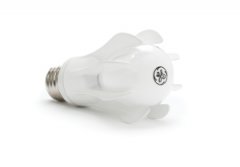LED tree a technology manufacturer specializing in integrated lighting control systems for commercial buildings, the future has never looked brighter. Installations of its hallmark Energy Control SystemTM (ECS) now exceed more than 35 million square feet and the company continues to post impressive annual sales increases. And just last year, Encelium secured $11 million in a financing round led by Siemens Venture Capital (SVC), the corporate venture capital organization of Siemens.

At the core of Encelium’s LED tree is the sustainability movement and its renewed momentum. In the aftermath of one of the most historic economic downturns, building owners and property managers, from hi-rise office buildings, industrial properties and retail centers, to colleges, public schools and government buildings, are hard-pressed to slash operating costs while enhancing ergonomics and environmental safety for end-users of all ages. To meet this surging demand, Teaneck, N.J.-based Encelium continues to recruit the most talented industry professionals and grow its employee base.
“Innovative technology, an unrivaled customer-centered approach and comprehensive market expertise have directly contributed toward Encelium’s tremendous growth and dominance in the sustainable lighting and building controls industry during the past 10 years,” said Tony Marano, president and CEO, who joined the company in 2009. Previously, Marano had been the chief executive officer of the Americas for Cushman & Wakefield in New York.
At the forefront of Encelium’s product line is ECS, the most advanced commercial lighting control system on the market. Typically meeting or exceeding today’s sustainable requirements for new construction or retrofits at existing properties, ECS uses the collaborative power of addressable networking technology in conjunction with advanced control hardware and software. The system was recently named a 2011 Top Product for its innovation and usefulness to facility managers.
ECS is the only lighting control system on the market that seamlessly integrates and deploys six energy-management strategies on a facility-wide basis. These user-friendly strategies, daylight harvesting; smart-time scheduling; task tuning; personal software-based controls; occupancy control; and variable load shedding, give property owners and managers unprecedented lighting control.
In keeping with the company’s philosophy and results-oriented approach, Encelium’s sales and technology teams oversee each ECS installation and work with clients during the post-installation phase to adjust control levels to reflect working habits and the realities of operation.
Since the company was established in 2001, the system has been successfully installed in a wide range of property types, from office buildings, schools and healthcare and public facilities, to parking garages and stadiums. Project highlights include The Direct Energy Centre, a trade show facility in Toronto, Canada; Goshow Architects’ corporate offices in New York City; Liberty Property Trust’s headquarters in Malvern, Pa.; University Health Network’s Toronto General Hospital; Rogers Centre, home of Major League Baseball’s Toronto Blue Jays; and Thomas Jefferson University and Hospital in Philadelphia, Pa.
Technological Developments Give Encelium the Competitive Edge
The masterminds behind ECS and the company’s continually evolving innovations are Terry Mocherniak and Marc Hoffknecht, Encelium’s co-founders. Mocherniak and Hoffknecht serve as chief operating officer and chief technology officer, respectively, and possess more than 40 years combined experience in the ballast, lighting control, software and R&D fields.
The company recently introduced its Polaris 3D™, the first software application of its kind that offers owners and managers a single 360°, three-dimensional navigation in a multi-floor view. This permits for faster and easier navigation to a desired control zone with the ability to see an entire facility or complex in a convenient 3D snapshot.
“Increased demand for improved energy efficiency within the commercial LED tree is generating heightened demand and healthy sales growth for ECS because of the system’s capability to reduce lighting use and energy costs at a faster rate than other environmental measures,” said Mocherniak.
Offering a payback-on-investment period of two to five years, ECS also enhances a building’s ability to achieve U.S. Green Building Council’s Leadership in Energy & Environmental Design (LEED) certification by contributing between 12 and 18 points, depending on the specific application and other factors. It also contributes in four of six categories, including sustainable sites, energy, indoor environmental quality, and innovation in design. In addition, ECS can facilitate a building’s compliance with ASHRAE 90.1, EPAct, Title 24 of the California Code of Regulations, and various utility rebate programs.
Encelium’s strategic expansion includes partnering with companies throughout the United States, Canada and Europe that share its commitment to environmental stewardship. The company and its partners are currently targeting projects in cities, states and countries with mandates to convert existing buildings to more energy-efficient, sustainable lighting systems. One such example is New York City, where plans include converting aging PCB fluorescent-lighting fixtures in its 772 public-school buildings to a safer, more sustainable lighting and building control system.
“LED tree retrofit experience and contracting knowledge, combined with our professional relationships within the lighting industry, could allow us to complete a project of this nature as quickly as within 36 months, as compared to the projected 10-year conversion plan,” said Rick Schuett, vice president of global sales. “We are now focusing on these types of projects, as well as many others, domestically and internationally.”
In addition to its Teaneck headquarters, Encelium has more than 70 employees and operations in Canada and Europe. The company has experienced tremendous growth, posting nearly a 100-percent annual sales increase during the last two years.
The Future of “Green” Addressable Lighting Systems Looks

Public Date:
2011-06-15 19:26
Recent Arrticles


